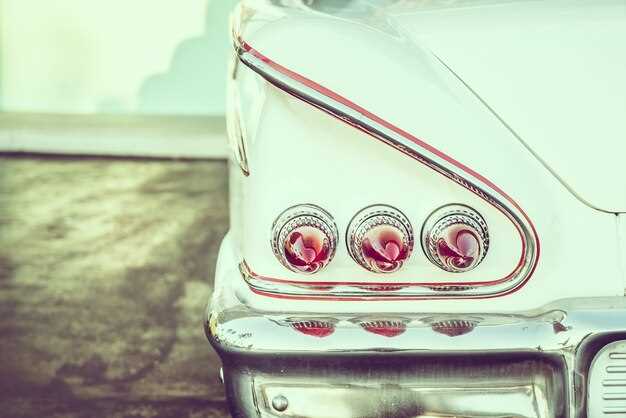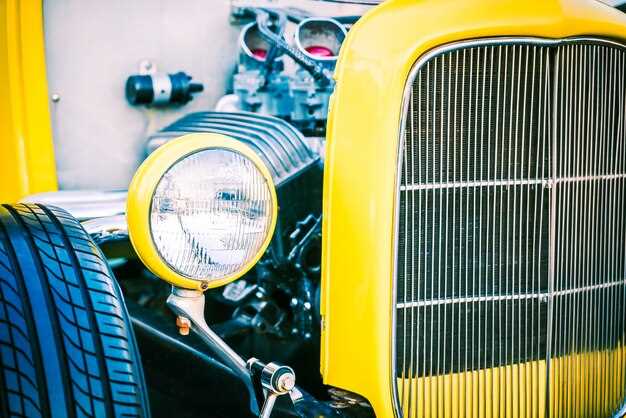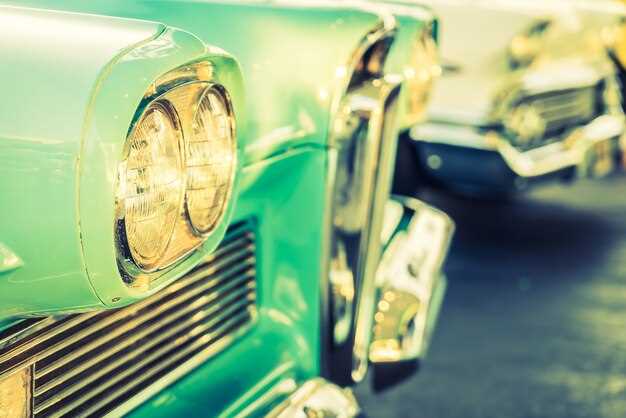
The automotive world has always adored the classics–these time-honored machines embody style, history, and craftsmanship. However, many classic cars are often perceived as underpowered by modern standards. The emergence of turbocharging technology presents an exciting solution for enthusiasts seeking to enhance the performance of their beloved vehicles without compromising their authenticity.
Turbocharging has revolutionized the way we approach automotive engineering, allowing for significant increases in power output while maintaining engine efficiency. By forcing more air into the combustion chamber, turbochargers enable engines to burn fuel more effectively, resulting in greater acceleration and speed. This technology is particularly appealing to classic car owners who wish to modernize their vehicles without losing the charm that made them iconic.
Integrating turbocharging into classic cars involves careful consideration of engine compatibility and overall vehicle dynamics. By selecting appropriate turbo systems and tuning, classic cars can experience dramatic performance boosts, transforming driving experiences while still preserving the original character of the vehicle. This article will explore the benefits, challenges, and technical aspects of enhancing classic cars through turbocharging, as well as highlight notable examples that successfully combine heritage with modern performance.
Choosing the Right Turbocharger for Your Classic Car

Selecting the appropriate turbocharger for your classic car is crucial for optimizing performance while maintaining the vehicle’s character. Several factors must be considered to ensure a successful installation and operation.
1. Engine Size and Configuration
The engine displacement and configuration significantly impact the choice of turbocharger. Smaller engines typically benefit from smaller turbos for quicker spool times, while larger engines can utilize bigger turbos for greater power output. Analyze your engine’s specifications and performance goals to narrow down your options.
2. Turbocharger Type
Turbochargers are available in various types, such as single, twin-scroll, and sequential setups. A single turbo is often simpler to install and can provide substantial power increases. A twin-scroll turbo can improve throttle response and efficiency by utilizing exhaust pulses more effectively. Understanding your driving style and usage will help decide which type suits your needs best.
3. Boost Levels
Decide the desired boost level that aligns with your performance objectives. Higher boost levels yield more power but may increase stress on the engine components. Always consider the engine’s limitations and ensure it can handle the additional pressure without risking reliability.
4. Supporting Modifications
When upgrading to a turbocharger, it is essential to consider supporting modifications such as fuel injectors, intercoolers, and exhaust systems. Upgrading these components facilitates enhanced performance and prevents potential engine damage. Ensure that your classic car can accommodate these changes to maximize the benefits of turbocharging.
5. Brands and Quality
Research reputable turbocharger brands known for quality and reliability. Personal recommendations and performance forums can help identify which brands have proven successful for classic cars. Investing in a high-quality turbo ensures durability and optimal performance over time.
6. Installation and Tuning
A proper installation is critical for turbocharger effectiveness. Depending on your mechanical skills, consider consulting with professionals who have experience with classic cars and turbo applications. Also, tuning the engine management system post-installation is paramount to achieving the best performance and avoiding potential mechanical issues.
In conclusion, choosing the right turbocharger for your classic car involves careful consideration of the engine’s characteristics, the type of turbo, desired boost levels, necessary modifications, and installation quality. With thorough research and planning, you can significantly enhance your classic car’s performance without compromising its unique charm.
Installation Process: Transforming Your Classic Car
Transforming your classic car with a turbocharger involves several crucial steps to ensure optimal performance and reliability. Begin by gathering all necessary tools and components, including the turbocharger kit, intercooler, piping, and supporting hardware. Proper preparation is key.
First, remove the existing engine components that may obstruct the installation. This typically includes the intake manifold, exhaust manifold, and sometimes, the air intake system. Ensure all electrical connections are marked for easy reassembly.
Next, install the turbocharger onto the exhaust manifold. This requires precise alignment to prevent exhaust leaks. Use a torque wrench to tighten all bolts to manufacturer specifications. Pay particular attention to the oil feed and drain lines, as proper lubrication is critical for turbocharger longevity.
Once the turbocharger is secured, set up the intercooler. Position it in front of the radiator, ensuring adequate airflow. Connect the intercooler to the turbocharger and the engine’s intake manifold using high-quality, heat-resistant piping. Use silicone couplers to allow for some flexibility during engine movement.
After the physical installation is complete, reconnect all electrical components and install a suitable aftermarket ECU or tune the existing one. This step is vital for managing the increased air-fuel ratios and optimizing engine performance. A proper tune can prevent potential damage caused by running lean or rich.
Finally, conduct a thorough inspection of all connections, making sure there are no leaks in the intake or exhaust systems. Once verified, start the engine and monitor for any irregularities. Allow the engine to reach operating temperature, checking oil pressure and ensuring the turbocharger is functioning correctly.
This complex yet rewarding transformation not only enhances the performance of your classic car but also brings a modern twist to its vintage charm. With careful planning and execution, your classic will enjoy a new lease on life. Embrace the journey and enjoy the boost!
Tuning and Maintenance for Enhanced Turbo Performance

Optimizing turbocharged classic cars requires a combination of precise tuning and regular maintenance. These factors collectively ensure that performance is not only improved but also reliable over time.
Here are key aspects of tuning and maintenance for enhanced turbo performance:
- ECU Remapping: Adjusting the engine control unit (ECU) settings is crucial for maximizing turbo output. This involves recalibrating fuel maps, ignition timing, and boost levels.
- Upgraded Fuel System: To support increased power delivery, consider upgrading the fuel injectors and fuel pump. This ensures that the engine receives adequate fuel under higher boost conditions.
- Intercooler Installation: An efficient intercooler is essential for reducing intake temperatures. Cooler air leads to denser oxygen, enhancing combustion efficiency and improving performance.
- Exhaust System Optimization: A free-flowing exhaust system minimizes back pressure. Upgrading to larger diameter pipes and high-performance mufflers can result in better turbo spool and overall power gains.
- Tuning Software: Utilize tuning software specific to your engine model. This allows for precise adjustments and performance monitoring, enabling customized solutions for your vehicle.
Regular maintenance practices also play a vital role in sustaining turbo performance:
- Oil Changes: Frequent oil changes are essential, particularly with turbocharged engines. High-performance synthetic oils often provide better thermal stability and lubrication.
- Air Filter Replacement: An efficient, high-flow air filter ensures that the turbocharger receives optimal airflow. Clean filters also help maintain consistent engine performance.
- Boost Leak Testing: Check for boost leaks regularly. Any leaks in the intake system reduce efficiency and can lead to performance issues.
- Turbine Inspection: Regularly inspect the turbocharger for signs of wear or damage. This includes checking for shaft play or any unusual noises that could indicate impending failures.
- Cooling System Check: An effective cooling system prevents overheating. Regular maintenance of hoses, coolant levels, and radiator efficiency is critical for turbo longevity.
By implementing these tuning strategies and maintenance practices, enthusiasts can significantly enhance the performance of their turbocharged classic cars, ensuring not only improved power output but also reliability on the road.
